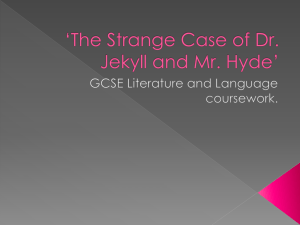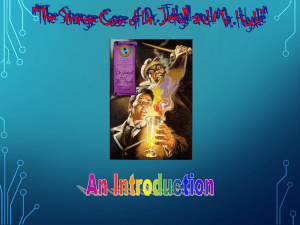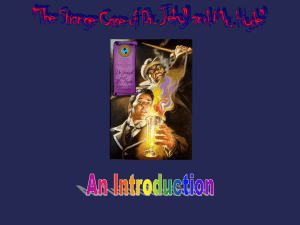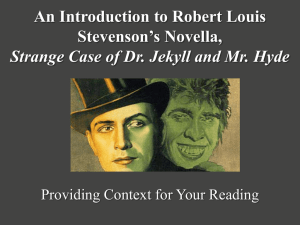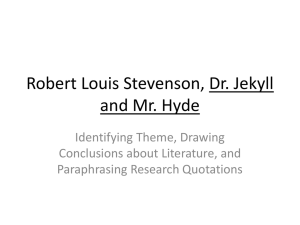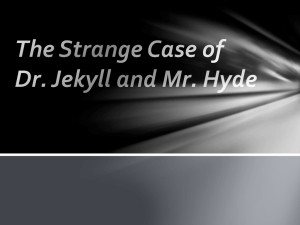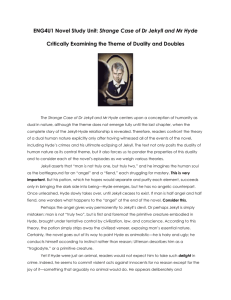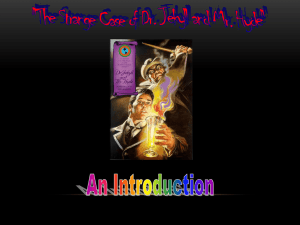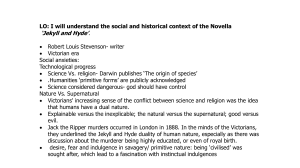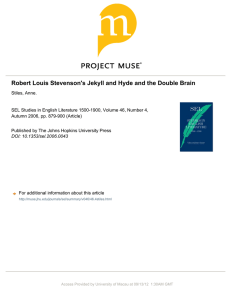Jekyll and Hyde Power Point
advertisement
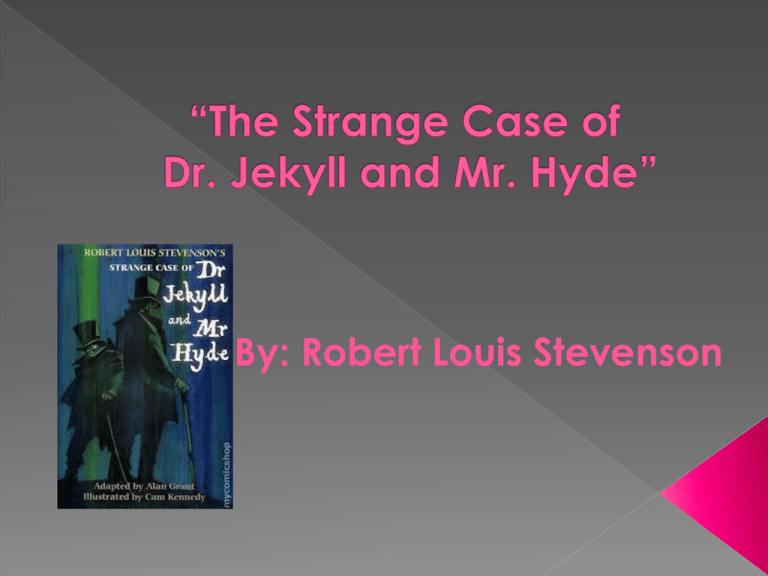
By: Robert Louis Stevenson What does the image suggest about the character? What does the image suggest about the character? ‘The Strange Case of Dr Jekyll and Mr Hyde’ is a novella written by the Scottish author Robert Louis Stevenson. First published in 1886. It is about a London lawyer who investigates strange occurrences between his old friend, Dr. Henry Jekyll, and Mr. Hyde. The novella is known for its vivid portrayal of a split personality, split in the sense that within the same person there is both a good and an evil personality each being quite distinct from the other. ‘The Strange Case of Dr Jekyll and Mr Hyde’ is one of Stevenson's best-selling works. Stage adaptations began in Boston and London within a year of its publication and it has gone on to inspire scores of major film and stage performances. It has been the influence for The Hulk, TwoFace and the general superhero genre for the story's ties to a double life. Stevenson had long been interested in the idea of the duality of human nature. One night in late September or early October 1885 Stevenson had a dream, and on wakening had the intuition for two or three scenes that would appear in the story. "In the small hours of one morning," says Mrs Stevenson, "I was awakened by cries of horror from Louis. Thinking he had a nightmare, I woke him. He said angrily, 'Why did you wake me? I was dreaming a fine bogey tale.' I had awakened him at the first transformation scene ..." After several drafts Stevenson re-wrote the story again in three to six days, allegedly with the assistance of cocaine. ‘The Strange Case of Dr Jekyll and Mr Hyde’ was initially sold as a paperback for one shilling in the UK and one dollar in the U.S. Initially stores would not stock it until a review appeared in The Times, on 25 January 1886, giving it a favourable reception. Within the next six months close to forty thousand copies were sold. By 1901 it was estimated to have sold over 250,000 copies. This story represents the inner conflict of good and evil. The novella has been interpreted as an examination of the duality of human nature (that good and evil exists in all) and that the failure to accept the evil side results in evil being projected onto others. In Freudian Theory it is thought that if someone banishes all evil to the unconscious mind, in an attempt to be good, it can result in a Mr. Hyde-type aspect to that person's character. The novella has also been noted as "one of the best guidebooks of the Victorian era" due to its description of the fundamental dichotomy of the 19th century "outward respectability and inward lust" as this period had a tendency for social hypocrisy. A common interpretation is the parallel drawn with the city of Edinburgh which consists of two distinct parts: the old medieval section historically inhabited by the city's poor, where the dark crowded slums were rife with all types of crime, and the modern Georgian area of wide spacious streets representing respectability Two Face, enemy of Batman
